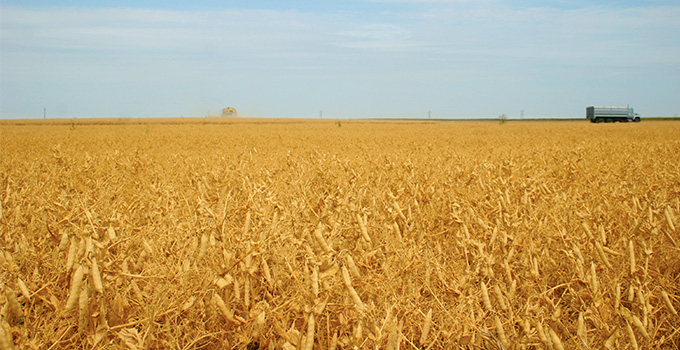Pre-harvest herbicide applications help maximize harvest windows while improving crop quality and eliminating problem weeds. Ensuring a product’s mode of action matches the time of application is critical, but sometimes, whether due to logistical challenges or adverse environmental conditions, the timing of pre-harvest herbicide applications can vary significantly.

According to Tristan Huber, Grow Team Advisor with Co-op, flexibility in herbicide options is key to giving growers opportunities for earlier, middle and late application periods. Now, with a new forthcoming product, HOT AQ™, Co-op has options for all three.
Why apply pre-harvest herbicides?
Weeds at harvest can reduce harvest efficiency and compromise crop quality due to contamination and dockage. Pre-harvest applications help manage these risks and promote a more uniform crop dry-down for timely and efficient harvest. Having fewer living weeds late in the year also suppresses weed seed banks and reduces the chance that harvest equipment will become plugged while in operation.
Huber said it’s important to know what the goal of pre-harvest application is – whether it’s for weed control or crop dry-down – because pre-harvest glyphosate and desiccating applications are different in how they behave.
“Two big reasons for pre-harvest application are controlling weeds so you don’t get viable seeds into that seed bank, and no green material for harvest,” said Huber.
“Timing is important. If you wait too long, you may not get your money’s worth on the application since the crop is maturing on its own, and weeds have already set seeds. If your application is too early, you might have some grain quality impacts with green or shrunken seeds that weren’t fully matured. If you execute a good in-crop herbicide application, and time pre-harvest glyphosate applications right, you can usually tell what fields have been sprayed properly the next spring – they just seem that much cleaner.”
What to use when
Historically, Co-op has offered two products for pre-harvest desiccation: VECTOR®, a systemic glyphosate formulation that has a wider application window than Diquat, and BOLSTER® II, a more rapid-acting Diquat dry-down product for later applications.
“Vector can have the most flexibility when it comes to pre-harvest application timing. It should always be applied to actively growing weeds. If they’re already drying down and the seed is set, it may not do what you need it to do. Any temperatures above 8 to 10 degrees Celsius for more than two hours in a day is enough for it to work,” said Huber.
“Bolster II is best used when the field is 90 per cent ready to go – when you have brown seeds and rattling pods. If you go with Bolster II too soon, you risk locking in some green with your seeds.” Huber added that Bolster II is also best applied under overcast skies or later in the evening because it’s susceptible to photodegradation.
By contrast, Co-op’s new private brand crop protection product HOT AQ features a combination of both systemic and contact activity, designed for crops that have reached 70 to 80 per cent maturity.
“Our new product HOT AQ covers crops that are a little more variable. It’s also not based on glyphosate, which makes it an especially good option for growers growing Roundup-Ready canola. It will still actively help dry down those varieties.”
Pre-harvest intervals
Huber also pointed to the importance of considering pre-harvest intervals when using pre-harvest herbicides – that is, the minimum amount of time that must pass between the last application of a pesticide and harvest to ensure pesticide residues on the crop are reduced to levels safe for consumption. Co-op’s new product HOT AQ features a middle-of-the-road pre-harvest interval of three days for most crops, compared to seven days for Vector and 12 to 24 hours for Bolster II. At application, HOT AQ should be applied with at least 10 gallons (38 litres) of water. Bolster II, by contrast, requires 20 gallons (76 litres) of water per acre.
“That’s for ground sprayers, of course. By airplane, you need as much water as possible.”
Speak to your local Co-op Grow Team member for expert advice and the best recommendation for your field.

